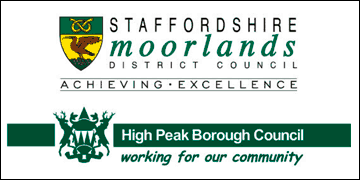Paper is increasingly pointless, at least in a business setting. This is largely due to the fact it’s costly, it takes time to fill out and post paper forms, and its production has a negative impact on the environment. This is why for years most businesses have been finding ways to digitise processes that previously required it, writes Paul Beaney, customer success director at DEF Software.Â
It’s no secret that the public sector has found it harder to ‘break up’ with paper than the private sector, and that’s none more apparent than when you look to a planning department within local government, where paper applications still exist.
As with many public sector departments, COVID-19 has accelerated digital change. In planning there was an absolute need to go paperless when the virus hit, due to staff not being allowed into the offices where the paper was stored, but also because it has since emerged that some strains of the virus can live on paper for up to five days.
The apparent excuse not to undertake digital transformation has been removed. The rate at which the local authorities who were looking to achieve a transition to go paperless and did so was staggering, considering the fact that not all workers had access to printers at home during lockdown – but there is still work to be done.
A reluctance to change
We need to recognise why the sector had been slow to adopt a paperless approach, and before we do this, it’s important to note that this is not a statement that applies to every council planning department, some have led by example and been completely paperless for over a decade. But many struggle to let go of the traditional approaches, particularly when it comes to leadership.
When councils talk about transformation, it should not merely be limited to overhauling legacy contracts, moving systems to the cloud or building digital citizen portals. This is the digitisation part and it’s the start of the process but far from the end of it, and paper is really only one strand of this.
Transformation is far more widespread and deep-rooted — it must take place with the acceptance from staff first so that they can embrace digital rather than letting it lead them, and potentially overwhelming them.
What we are starting to see is a sea change affected by the next generation of employees and leaders, some of whom have more experience with digital tools. This may be because they are more ‘tech native’ and the more eco-conscious, but primarily it’s a want driven by the efficiencies that digital correspondence and form-filling brings.
What does a paperless planning system look like?
Each step of the planning process represents a different challenge for reducing paper need and this extends to several different roles. From those in the office to those using paper forms and paper site plans when visiting onsite.
But there is now a plethora of solutions for each issue, especially as most councils have back-office planning systems which are able to integrate with solutions that can extend paperless processes to other parts of the department.
A good example of a paperless office would look like this: over 90% of applications are submitted online, no parts of planning application files are printed, and no paper is received in the planning office; all post is received and processed by a corporate scanning team and sent electronically to appropriate staff; any paper applications are also scanned and sent electronically to the planning team for registration and validation, who then index all applications in the back-office system.
Finally, all correspondence throughout the application determination process is done electronically where possible, with council website information and links to the Planning Portal aligned to encourage online submission and inclusion in the planning process.
Solutions
There are easy to implement solutions, that can quickly negate the need for paper. This list is by no means exhaustive, but as a first port of call cloud computing can be immensely useful. If the software is ‘true cloud’, planners should be able to pick up their work anywhere, without the need to print out paper when taking work home or on site.
Automating the whole application process and using online forms can not only save paper, but also help local authorities to record decisions and issue permits, quickly and simply. It mirrors the digitisation already happening for planning applications and no major delays have been reported during the last few months — with applications still being decided within the permitted time frame in many cases, despite the unprecedented numbers of applications being submitted to local authorities
Moving site inspection forms online also has multiple benefits, removing the need for someone in an office to search for the paper case file, select the paper plans they wish to take onsite with them and then have to manually update the record on their return to the office. It also enables the planning officer to take photographs using their mobile device which are automatically uploaded into the back-office system from the remote location.
As an added benefit this also saves the construction company from having to wait until the day after the inspection to try and ring the service, hope that they can get through, and find out whether the site visit was successful.
With a mobile solution, such as Jotter, forms can be filled out onsite on a device removing the need for dual entry. It also means that all forms are available at the touch of a button, so they can’t be ‘forgotten’ and perhaps most critically at this time, they don’t need to be passed physically between two people, reducing the chances of possible spread of the virus.
Conclusion
The drive to use less paper doesn’t just come from internal pressures, it’s starting to become a sticking point for outside stakeholders as well, frustrated at the time and cost it takes to see a paper application through. It’s important that councils remain accessible for all, and for that reason it’s likely that some form of paper application will be around for a few more years, but the time has come to strive for the option that will create a better environment, improve workflows and to set that example to customers too.

















Leave a Reply